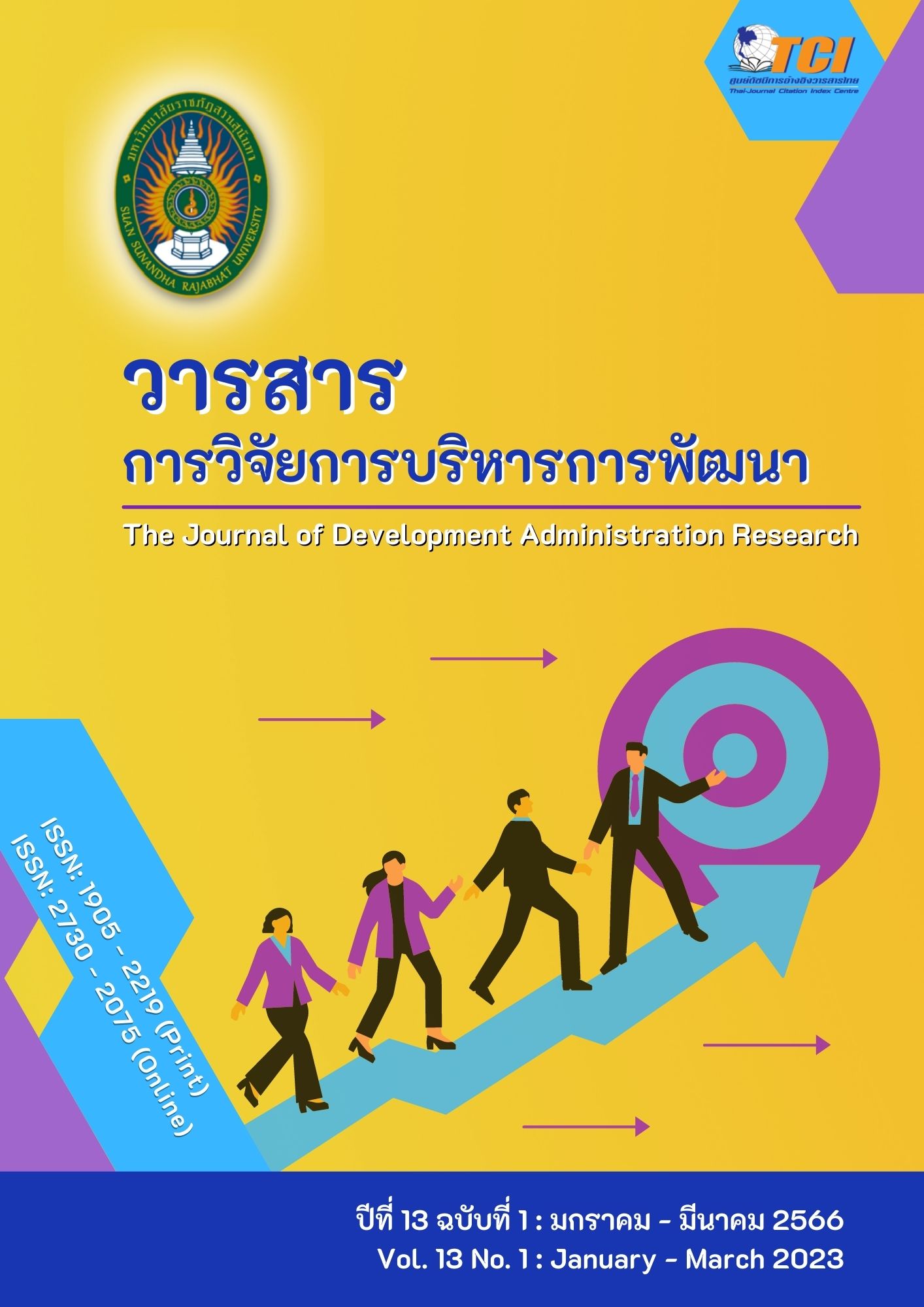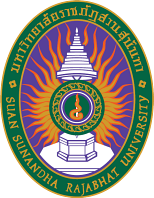Bollywood Film - Induce (2010 – 2020) Tourist Motivation, The Case of Thailand
คำสำคัญ:
Bollywood, Tourist, Motivation, Revisitบทคัดย่อ
India is among the largest countries in the world, which means that it is a potential market for countries like Thailand to attract their population for a holiday visit. Sceneries and attracts attract not only tourists but also film-making companies. There are countless Indian films shot in Thailand. Therefore, this study aims to investigate film-induced tourism in Thailand among Indian tourists by looking at the relationship between motivation, destination image, and (re)visit intention. The population of this study will be Indian Bollywood film viewers in Mumbai; the number of samples in this study is 220.
The SEM findings show that motivation directly affects destination image and (re)visit intention, respectively, which offer a positive influence. The positive impact means that if motivation increases, destination image and (re)visit intention will also increase. On the other hand, if motivation decreases, destination image and revisit purpose will decrease. Moreover, the findings suggested that reason indirectly influences (re)visit intention, and destination image directly affects (re)visit goal. Likewise, the relationship follows the same direction, which means that if destination image increases, (re)visit intention will also increase, and vice versa. Based on these findings, it can also be implied that the destination image can be considered as a partial mediator variable between motivation and (re)visit intention. The influence of destination is only partial, as motivation also directly affects (re)visit intention while also impacting (re)visit meaning through destination image.
เอกสารอ้างอิง
Angsuchote, S. et al. (2011). Statistical analysis for social science and behavioral science research: Techniques for using LISREL (3rd ed). Bangkok: Charoen Dee Munkong Printing.
Baker, B. (2007). Destination branding for small cities: The essentials for successful place branding. Portland, Oregon: Creative Leap Books.
Basanez, M. (2011). A world of three cultures: Honor, achievement and joy. New York: Oxford University Press.
Beeton, S. (2005). Film-induced tourism. Clevedon: Channel View Publications.
Burns, P. M., Palmer, C. P. & Lester, J. A. (2001). Tourism and visual culture: Theories and concepts. UK: CABI Organization.
Busby, G. & Klug, J. (2001). Movie-induced tourism: The challenge of measurement and other issues. Journal of Vacation Marketing, 7(4), 316-332.
Butler, R. W., & Boys, S. W. (2000). Tourism and national parks: Issues and implications. UK: John Wiley & Sons.
Chaudhary, M. (2010). Tourism marketing. New York: Oxford University Press.
Cineswami. (2012). Cuba, Ireland milk Salman Khan’s ‘Ek Tha Tiger’ magic. Retrieved June, 3 2022, from http://www.bollywoodlife.com/newsgossip/cuba-ireland-milk-salman-khans-ek-tha-tiger-magic/
Connell, J. (2012). Film tourism-evolution, progress and prospects. Tourism Management, 33, 1007-1029.
Gartner, W. (1994). Image formation process. Journal of Travel & Tourism Marketing,2,191-216.
Hudson, S., & Ritchie, J. R. B. (2009). Branding a memorable destination experience: The case of brand Canada. International Journal of Tourism Research, 11(2), 217-228.
Kozak, M., & Decrop, A. (2009). Handbook of tourist behavior: Theory & practice. New York: Routledge.
Huang, C-C, & Kin, T-C. (2008). Understanding knowledge management system usage antecedents: An integration of social cognitive theory and task technology fit. Information & Management, 45(6), 410-417.
Lomine, L., & Edmunds, J. (2007). Key Concepts in Tourism. New York: Palgrave Macmillan.
McCartney, G. (2013). Introduction to tourism management: An Asian perspective. Singapore: McGraw-Hill Education.
Mittal, N., & Anjaneyaswamy G. (2013). Film induced tourism: A study in Indian Outbound Tourism. Atna, Journal of Tourism Studies, 8(2), 37-54.
Nunnally, J. C. (1978). Psychometric theory (2nd ed.). New York: McGraw-Hill.
Riley, R., Baker, D., & Doren, C. S. V. (1998). Movie-induced tourism. Annals of Tourism Research, 25(4), 919-935.
Roy, A. (2018). The middle class in India from 1947 to the present and beyong. Education About Asia, 23(1), 32-37.
Thapthep, P., & Rohani, H. (2022). Destination space in film, a sense of the viewer’s perspective of how film destination contributes to the promotion of Thai tourism: A study in selected films. Tourism Culture & Communication.
Tourism Australia. (2012). Summary of tourism Australia’s 2020 India strategic plan. Retrieved June, 3 2022 from http://www.tourism.australia.com/documents/Markets/India2020-June2012.pdf
Venu, V., Vijayakumar, B. & Saroop, R.B. (2017). An introduction to the business of tourism. Sage Publications.
Wong, I. A., Song, Y. C., & Zhang, C. (2021). Not all films are created the same: Understanding the cross-level effect of movie ratings on destination image creation. Journal of Travel & Tourism Marketing, 38(4), 356-367.
ดาวน์โหลด
เผยแพร่แล้ว
รูปแบบการอ้างอิง
ฉบับ
ประเภทบทความ
สัญญาอนุญาต
ลิขสิทธิ์ (c) 2023 วารสารการวิจัยการบริหารการพัฒนา

อนุญาตภายใต้เงื่อนไข Creative Commons Attribution-NonCommercial-NoDerivatives 4.0 International License.
บทความที่ได้รับการตีพิมพ์เป็นลิขสิทธิ์ของมหาวิทยาลัยราชภัฏสวนสุนันทา
ข้อความที่ปรากฏในบทความแต่ละเรื่องในวารสารวิชาการเล่มนี้เป็นความคิดเห็นส่วนตัวของผู้เขียนแต่ละท่านไม่เกี่ยวข้องกับมหาวิทยาลัยราชภัฏสวนสุนันทา และคณาจารย์ท่านอื่นๆ ในมหาวิทยาลัยฯ แต่อย่างใด ความรับผิดชอบองค์ประกอบทั้งหมดของบทความแต่ละเรื่องเป็นของผู้เขียนแต่ละท่าน หากมีความผิดพลาดใดๆ ผู้เขียนแต่ละท่านจะรับผิดชอบบทความของตนเองแต่ผู้เดียว




